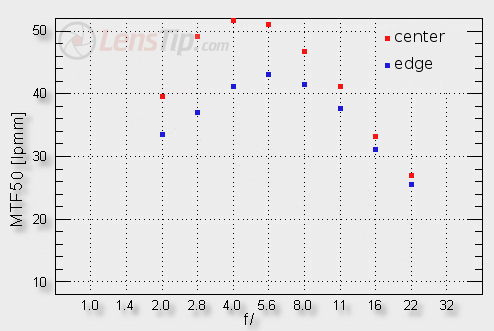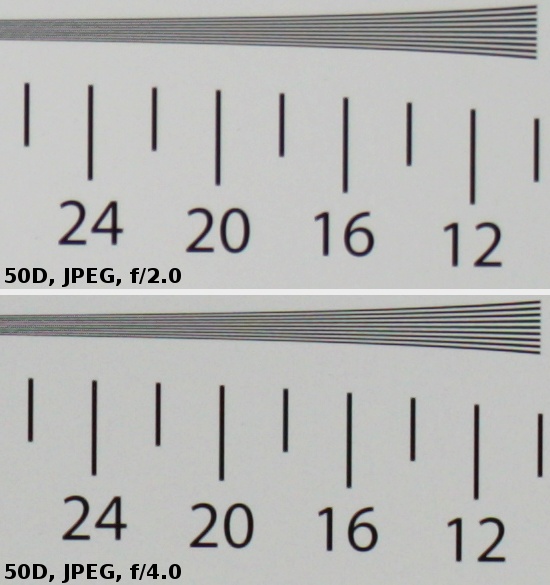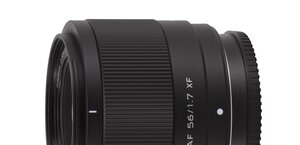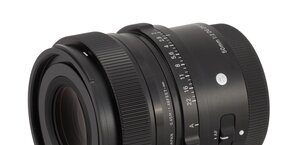Tamron SP AF 60 mm f/2.0 Di II LD (IF) Macro 1:1
4. Image resolution
Let’s check how the results of the Tamron 2.60 compare with that; you can see them presented on the graph below.

Please Support UsIf you enjoy our reviews and articles, and you want us to continue our work please, support our website by donating through PayPal. The funds are going to be used for paying our editorial team, renting servers, and equipping our testing studio; only that way we will be able to continue providing you interesting content for free. |
- - - - - - - - - - - - - - - - - - - - - - - - - - - - - - - - - - - - - - - - - - - - - - - -
The Tamron is faster in terms of aperture than the majority of macro lenses available on the market but still at the maximum relative aperture its result in the frame centre is good, reaching the level of almost 40 lpmm. By f/2.8 we already get over 49 lpmm so higher than the Canon 100L by the same aperture. By f/4.0 and f/5.6 the Tamron has results of 51-52 lpmm so within the margin of error the same as the record values of the Canon 100L. In short – revelation! You can also add that we didn’t expect nothing less here. Tamron got us used to such performances, for example with its macro 2.8/90 model which for many months held the resolution record in tests performed on the Canon 20D.
Keeping that in mind let’s check how the lens fares on the edge of the frame. One glance at the graph shows us that it fares there very well too. At the maximum relative aperture we get a fully useful image because with the results reaching 34 lpmm you can’t call it otherwise. Additionally, on stopping down the situation improves swiftly. The Tamron allows us to enjoy a splendid image quality in the centre and on the edge, also providing better fastness than almost all APS-C/DX rivals. Actually when it comes to the performance and parameters only the Olympus ZD 2/50 Macro might compete with the tested lens as it fared even better than the Tamron on the edge giving the same fastness and a similar angle of view.
It is also worth noticing that the resolution test of the Tamron 2/60 was based on three testing charts with considerably different sizes. The lens was tested at different magnification scales – in the case of the smallest chart the distance between the front element and the chart was distinctly smaller than 1 m. We haven’t observed any differences in resolution, within the margin of error, between particular charts.
Of course it would be worthwhile testing the resolution of the lens also with 1:1 magnification scale. The problem is we would need a testing chart the size of the APS-C/DX sensor so very small indeed. You should also keep in mind that the majority of photos taken with macro lenses set at minimum focus distances is also done with apertures heavily stopped down so at a point where the lens works in the diffraction limit. The results reached by the Tamron at 1:1 magnification scale by f/8, f/11 or f/16 will be, within margin of error, exactly the same as those presented in a graph below. Checking the resolution results of this lens at the 1:1 magnification by f/2.0 or f/2.8, although very interesting in and of itself, is a bit art for art’s sake.
At the end of this chapter we present the crops taken from JPEG files showing the centre of our test chart.
 |






